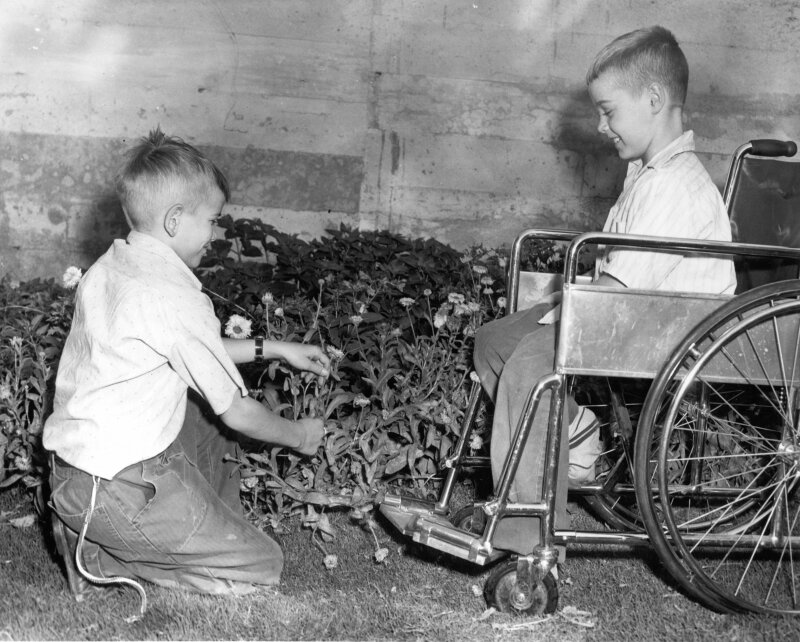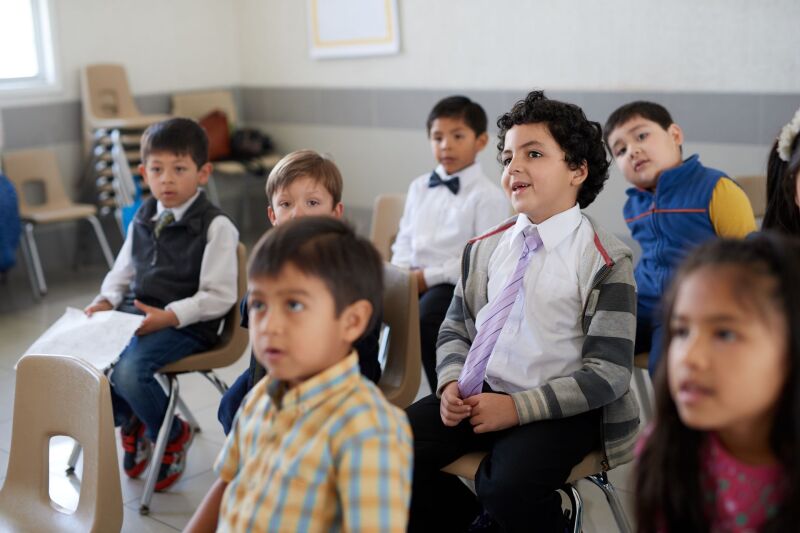It’s the year 1877. The location is fledgling Utah, bustling with gold miners on their way to California and Latter-day Saints still struggling to support families and live their religion in the face of environmental challenges and political persecution. This combination of outside influences, busy families just trying to survive, and a lack of organized activities for local children created an ideal breeding ground for mischief and trouble, as Farmington bishop John W. Hess and Latter-day-Saint mother of 12 Aurelia Spencer Rogers observed.
Bishop Hess, a Mormon Battalion veteran, was concerned about the youngest members of his congregation and called a meeting of the parents in the ward to discuss what could be done to help them. One of these parents, Sister Aurelia Spencer Rogers, was equally concerned and searched for a possible solution. At the time, there were Church programs to help the adults and the youth during the week, but nothing for the children—and after weeks of prayer and thought, that is exactly what Sister Rogers felt inspired to propose. After writing to Relief Society matriarch Eliza R. Snow with the idea of a Church organization for children, Sister Rogers and Bishop Hess were authorized by Church leadership to create the program that we now call Primary.

Since that time, Primary has become a staple in the Church. And though the specifics have changed over the years, the core purpose and goals of Primary still carry important lessons today in a modern, global setting. As we remember the anniversary of the first Primary meeting 145 years ago on August 25, 1878, here are a few of those important lessons.
The Importance of Music
The first weekly Primary meetings were made up largely of singing, scripture stories, and recitations—children memorizing scripture verses, poems, Articles of Faith, or other similar gospel-related content. While recitation isn’t emphasized as much in Primary today, the principle of teaching children the gospel through music has remained a key part of Primary. New Primary songs are frequently introduced, there is a complete book of gospel songs just for children, and when church was reduced from three hours to two, singing time is an important part of what remained.
As a Primary chorister and a mother, I have seen the power of good music in children’s lives. Poems, scriptures, and quotes may be forgotten over time, but songs stay with us. They can teach us when we are young and remind us of important truths when we are old. They can be tools to help children find comfort, share the gospel with others, or recognize the Holy Ghost. Music is still one of the key ways children can learn, understand, and remember the gospel.
Children Are Blessed by Learning with Other Children
Primary was originally intended to be something wholesome for children to do during the week that would teach them things like virtue, culture, service, love for one another, obedience, faith, prayer, punctuality, good manners, and the Word of Wisdom.
All of these intentions are still achieved today, but they have been built on as loving leaders have recognized the value of children gathering together. As the Primary organization has grown, so has its ability to connect children to each other and to the gospel. Sacrament meeting Primary programs allow children to share not only with the ward but with each other the things that they are learning. The Friend magazine share uplifting stories, art, and get-to-know-you pages about other children around the world. Friend to Friend events connect children to the gospel and to each other as they learn about the covenant path in languages and formats that are familiar and on their level. While we all need each other, learning often happens best when we interact with those who understand things at our level or are in our same stage of life. And Primary is the perfect place for children to do that.
▶You may also like: Church to offer all three global magazines free of charge

Reverence and Manners
One of Sister Rogers’s original desires for Primary was to have “an organization for little boys wherein they could be taught everything good, and how to behave.” In other words, she wanted a place for the little boys running wild in her ward to learn reverence, manners, and gospel principles.
That initial vision, of course, expanded to include little girls, and manners and reverence are still important lessons children can learn from Primary today. In Primary, children learn and have an opportunity to practice skills such as how to be polite, how to volunteer and serve, how to share, how to be kind to and love others, and how to listen. These skills are obviously useful in social settings. But more importantly, they are helpful spiritually, teaching children in a safe setting how to become more Christlike and to listen to the Holy Ghost and find peace in their lives as they get older.
Learning Begins at Home
Sister Rogers believed that to some extent, parental negligence in gospel teaching led to the need for Primary, as recalled in a BYU article about the history of the Primary Association:
“She [Aurelia] identified the causes of parents’ negligence in training their children as exhaustion of people who had been driven out of Illinois and suffered persecution of every kind and the fact that they could barely provide sustenance for their children. Nevertheless, she refused to accept any excuse for a lack of spiritual upbringing in what she considered ‘the most sacred duty of parentage.’”
At another time Sister Rogers stated, “The primary organizations are designed to assist the mothers in their most responsible duties in this direction, and mothers should not think their work at home more important, than sending their children to Primary meetings.”
This original desire for Primary has blossomed over the years as Come, Follow Me and other recent tools to help parents build a home-centered church have come about. The Friend magazine is published in multiple languages each month and shared online, offering a variety of age-appropriate ideas for teaching the scriptures at home and stories to teach the gospel to children of different ages. The Gospel for Kids app (available on Android and iOS) gives children the opportunity to listen to scripture stories, color gospel-themed coloring books, and more. The Gospel for Kids YouTube channel is another great resource for parents, turning scripture stories into kid-friendly videos and sharing creative ways to learn and share the gospel. All of these tools aid Primary’s original purpose of helping children and their families live the gospel in their homes.
Children Need a Foundation of Gospel Truth
In April 1978, 100 years after the Primary’s original meeting, Elder David B. Haight spoke about the Primary organization and stated that “Every child needs to know that he has a Father in Heaven who loves him, to develop a faith in Jesus Christ, and to desire to live His gospel so as to meet the pressures and problems of today’s world. Primary belongs to the children.”
Primary has always belonged to the children. The original Primary program aimed to give children something worthwhile to do during the week, help them learn valuable physical and social skills, and help their parents teach them the gospel. Over the years, Primary has continued to have similar goals. Elder Haight shared in his same 1978 talk, “Though Primary’s responsibility is awesome, the parent challenge is even greater. In addition to harmful programs on television, there are drugs, child abuse, acceptance of violent acts, and child pornography.” These dangers and challenges have only continued to multiply over the years, making Primary’s role in helping parents and children stay close to the Spirit even more important.
In 2018, as Primary celebrated its 140th birthday, the Primary General Presidency shared,
“Like the organization’s early leaders, the Primary Presidency today shares the same goal and mission—to help children feel Heavenly Father’s love and develop an understanding of their divine identity.”
This same Presidency shared, “Don’t underestimate [a child’s] ability to understand doctrine.” President Joy D. Jones went on to elaborate,
“We’ve got Primary children who are powerful little missionaries. We’ve got Primary children doing family history work. We’ve got Primary children preparing family names to take to the temple. ..... We have children who are playing the piano in sacrament meeting. We have children who are bringing their classmates and teachers from school to church.
“They are participating in the work of salvation as children, and we are seeing more and more examples of how powerfully they can be part of building this kingdom, God’s kingdom, here on the earth.”
Even more recently, Sister Camille N. Johnson added another way Primary still helps parents with the goal of building a foundation of gospel truths:
“If we create opportunities for the Spirit to be present and help our children recognize and put a name to what they are feeling, we will provide them with a reservoir of spiritual experiences to draw upon for a lifetime.”
Though some aspects of Primary have changed over the years, the value and purpose of the program carry on today, as Sister Rogers’s motto reminds us:
“Our children are our jewels.
“We have counted well the cost.
“May the angels ever guard them,
“And not one child be lost.”
- Aurelia Spencer Rogers helped her siblings cross the plains while their widowed father was on a mission in Great Britain.
- Aurelia had 12 children (5 died in infancy).
- The first Primary was for children ages 4–14.
- Eliza R. Snow suggested the name Primary, meaning “first” or “original.”
- Around 114 boys and 100 girls came to the first meeting.
- The hymn “In Our Lovely Deseret” was sung at the first Primary meeting.
- Roughly two years after Primary began, Eliza R. Snow published two music books for children, largely made of a selection of hymns from the adult hymnbook.
- The first Primary was organized in Farmington, Utah.
- After the Primary organization was introduced throughout the Church, children were asked for a show of hands if they wanted to be organized into a Primary Association.
- Primary presidents used to be nominated.
- The Primary Children’s Hospital in Salt Lake City was started and maintained by the Primary.
- Primary Association was at first part of Relief Society meetings that also included the Young Ladies’ Mutual Improvement Association.
- The first countrywide Primary conference was held in Provo in 1881.
- Children met together for 10 years before being divided into age groups.
Sources
- https://rsc.byu.edu/firm-foundation/primary-association-pioneers-early-history
- https://www.thechurchnews.com/2013/8/10/23224134/primary-celebrating-135-years
- https://latterdaysaintinsights.byu.edu/en/enduring-cheer-aurelia-spencer-rogers-founder-primary/
- https://www.churchofjesuschrist.org/church/news/primary-celebrates-135-years?lang=eng
- https://www.churchofjesuschrist.org/study/general-conference/1978/04/the-primary-enriches-the-lives-of-children?lang=eng
- https://rsc.byu.edu/firm-foundation/primary-association-pioneers-early-history
- https://newsroom.churchofjesuschrist.org/article/when-and-how-did-primary-begin-see-a-timeline-of-its-143-year-history#:~:text=Under%20the%20direction%20of%20priesthood,called%20as%20Primary%20general%20president.
- https://www.churchofjesuschrist.org/church/news/primary-celebrates-140-years-this-month?lang=eng
- https://www.churchofjesuschrist.org/study/church-historians-press/the-first-fifty-years-of-relief-society/part-3/3-30?lang=eng
- https://history.churchofjesuschrist.org/content/aurelia-spencer-rogers?lang=eng


